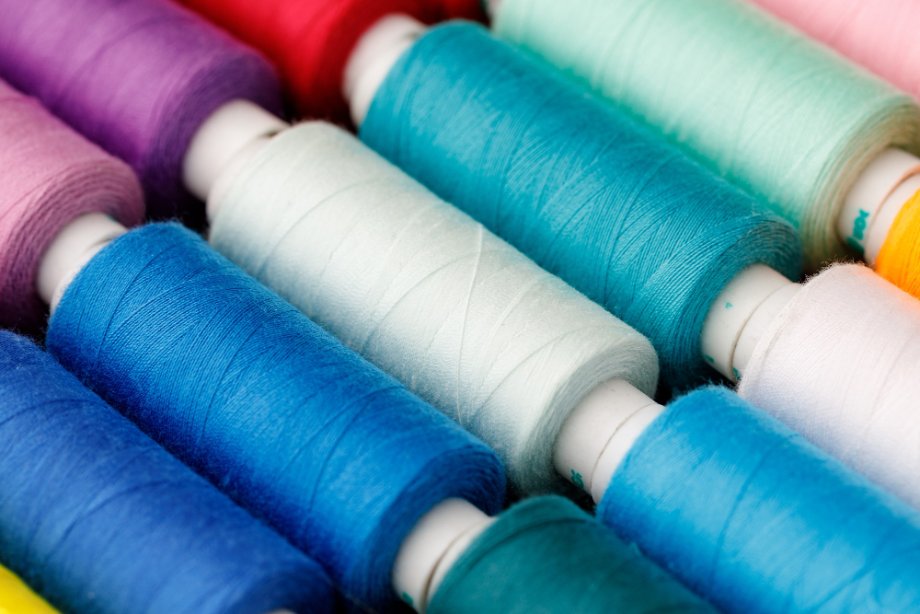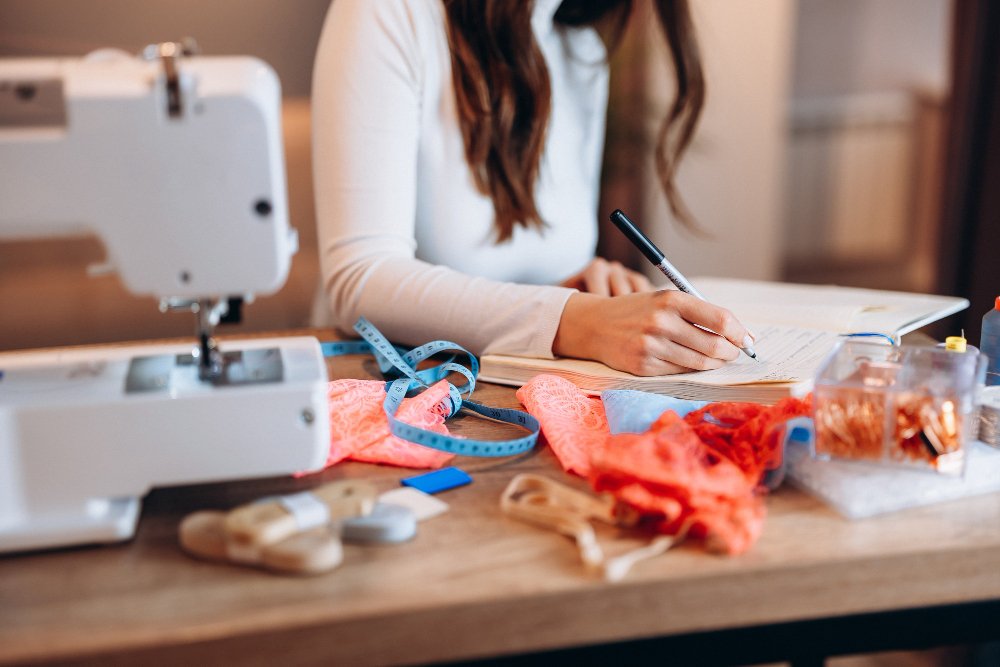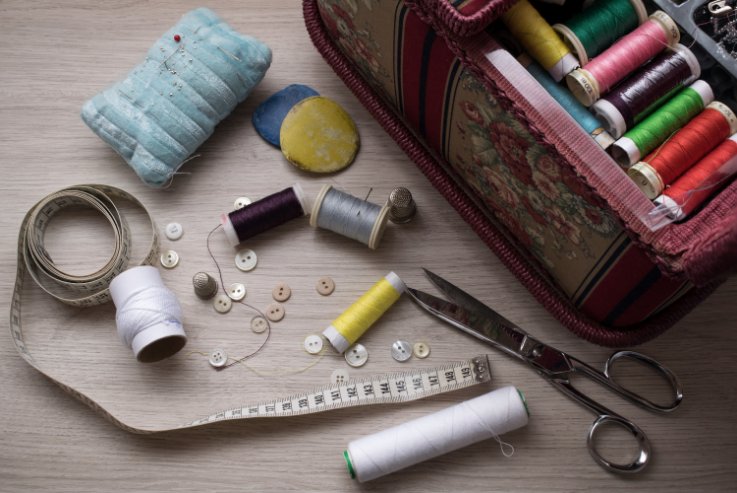Master thread selection with expert tips, troubleshooting guides, and sustainable options for every sewing project
Table of Contents
- Why Thread Selection Matters
- Understanding Thread Basics
- Types of Thread for Every Project
- Thread Weight and Measurement Systems
- How to Match Thread to Your Fabric
- Best Thread Brands Compared
- Troubleshooting Common Thread Problems
- Sustainable and Eco-Friendly Threads
- Thread Storage and Organization
- Smart Shopping for Thread
- Frequently Asked Questions
- Conclusion
Why Thread Selection Matters
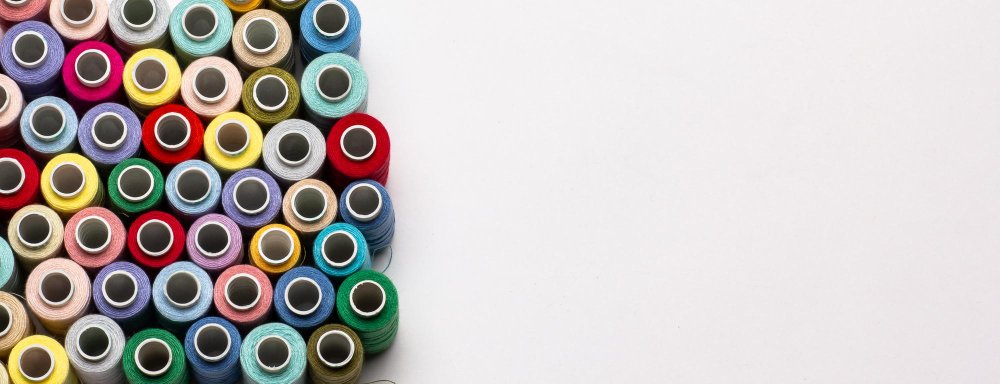
Choosing the right thread can make or break your sewing project. Whether you’re a beginner learning to sew a straight stitch or an experienced sewist working with stretchy fabrics, the thread you pick affects everything from durability to appearance.
Think of thread as the foundation of your project. Just like you wouldn’t build a house on weak ground, you shouldn’t create lasting garments with poor-quality thread. The right thread choice ensures your seams hold up over time, your colors stay vibrant, and your finished project looks professional.
Understanding Thread Basics
What Makes a Thread Good or Bad?
Good quality thread has three main features: consistent thickness, smooth surface, and proper twist. When you look at cheap thread under a magnifying glass, you’ll see fuzzy fibers sticking out everywhere. These loose fibers can jam your machine and leave lint in your stitches.
Thread Quality Check
Thread Construction: How It’s Made
Threads come in different constructions that affect how they perform:
- Spun Thread: Made from short fibers twisted together. Softer but can be fuzzier.
- Filament Thread: Made from long continuous fibers. Smoother and stronger.
- Core-spun Thread: Has a strong filament center wrapped with softer fibers. Best of both worlds.
Fiber Types Explained
| Fiber Type | Best For | Pros | Cons |
|---|---|---|---|
| Cotton | Natural fabrics, quilting | Breathable, heat resistant | Less stretch, can shrink |
| Polyester | Most projects, synthetics | Strong, colorfast, stretchy | Can melt with heat |
| Silk | Delicate fabrics, hand sewing | Beautiful, strong for size | Expensive, limited colors |
| Nylon | Heavy-duty, outdoor gear | Very strong, elastic | Can be stiff, limited uses |
Types of Thread for Every Project
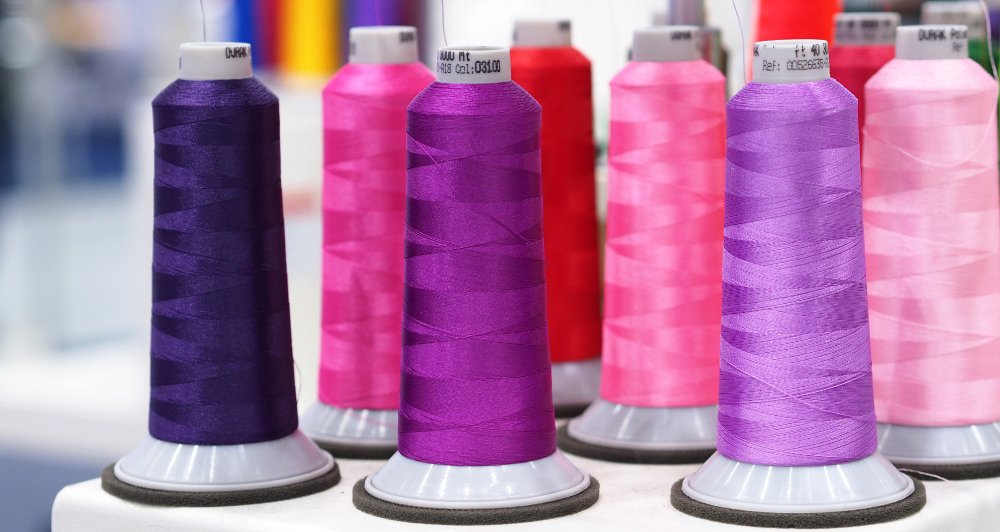
All-Purpose Thread: Your Go-To Choice
All-purpose polyester thread handles about 80% of your sewing needs. It works well with most common fabric types and gives you good strength without being too heavy. Most all-purpose threads come in 40-50 weight, which is perfect for general construction.
When to Use Cotton Thread
Cotton thread works best when you’re sewing cotton fabric and other natural fibers. It’s perfect for quilting because it has less stretch and won’t distort your piecing. Cotton thread also handles high heat better than polyester, making it great for items that need frequent pressing.
Heavy-Duty Threads
For thick materials like denim, canvas, or upholstery, you need heavy-duty thread. These threads are usually thicker (around 30 weight) and often have special coatings to handle tough materials. They work great for hemming jeans or making bags that need to carry weight.
Specialty Threads
Embroidery Thread
Embroidery threads come in rayon, polyester, and cotton varieties. Rayon gives the most shine but breaks easier. Polyester embroidery thread offers good shine with better strength. These threads are usually thinner (60 weight) to create fine details.
Metallic Thread
Metallic threads add sparkle but can be tricky to use. They often have a polyester core wrapped with metallic film. Use a larger needle, slow your machine speed, and consider using a thread lubricant to prevent breakage.
Clear Thread (Monofilament)
Clear thread becomes nearly invisible on your project. It’s perfect for appliqué work or when you’re sewing perfect hems on multicolored fabrics. Use the clear version on light fabrics and smoke-colored on dark fabrics.
Thread Weight and Measurement Systems
Understanding Thread Weight Numbers
Thread weight numbers work backward from what you might expect. The higher the number, the thinner the thread. This confuses many people at first, but once you remember this rule, it becomes easier.
Very Thick
Heavy upholstery
Thick
Denim, topstitching
Medium
General sewing
Standard
Most projects
Thin
Lightweight fabrics
Very Thin
Delicate work
Which is Thicker: 40 or 60 Weight Thread?
40 weight thread is thicker than 60 weight thread. Remember the rule: lower numbers mean thicker thread. So 40 weight thread would be better for medium-weight fabrics, while 60 weight works better for lightweight materials.
TEX and Denier Systems
Besides weight numbers, you might see TEX or Denier measurements:
- TEX 30 means the thread weighs 30 grams per 1,000 meters
- TEX 27 means the thread weighs 27 grams per 1,000 meters
- Denier measures grams per 9,000 meters
How to Determine What Thread Size to Use
Match your thread weight to your fabric weight:
- Lightweight fabrics (chiffon, silk): 60-80 weight thread
- Medium-weight fabrics (cotton, linen): 40-50 weight thread
- Heavy fabrics (denim, canvas): 30-40 weight thread
How to Match Thread to Your Fabric
The Golden Rules of Thread Matching
Follow these simple rules for the best results:
Thread Selection Process
How to Match Thread to Fabric Type
Here’s what works best with different fabric types:
| Fabric Type | Best Thread Choice | Why It Works |
|---|---|---|
| Cotton, Linen | Cotton or Cotton/Poly blend | Similar shrinkage and heat tolerance |
| Knits, Stretch fabrics | Polyester or Polyester blend | Stretch matches fabric movement |
| Silk, Delicate fabrics | Silk or Fine polyester | Gentle on delicate fibers |
| Synthetic fabrics | Polyester | Compatible fiber chemistry |
| Outdoor/Heavy-duty | Nylon or Heavy polyester | Maximum strength and weather resistance |
Should Thread Be Lighter or Darker Than Fabric?
For most projects, choose thread one shade darker than your fabric. Thread looks lighter when it’s stitched than it does on the spool. This slight difference helps your stitches blend in naturally.
For decorative stitching or topstitching, you might want the thread to stand out. In these cases, go for contrasting colors or metallic threads.
How to Match Thread to Needle
Your needle size should match your thread weight:
| Thread Weight | Needle Size | Fabric Type |
|---|---|---|
| 80 weight | 60/8 – 70/10 | Very lightweight |
| 60 weight | 70/10 – 80/12 | Lightweight |
| 50 weight | 80/12 – 90/14 | Medium weight |
| 40 weight | 90/14 – 100/16 | Medium-heavy |
| 30 weight | 100/16 – 110/18 | Heavy weight |
How Much Thread Do I Need for My Project?
Here’s a general guide for thread yardage:
- Simple blouse: 200-300 yards
- Pants: 300-400 yards
- Dress: 400-600 yards
- Men’s shirt: 400-500 yards
- Quilting (lap size): 800-1200 yards
Always buy extra thread. It’s frustrating to run out mid-project, and dye lots can vary between purchases.
Best Thread Brands Compared
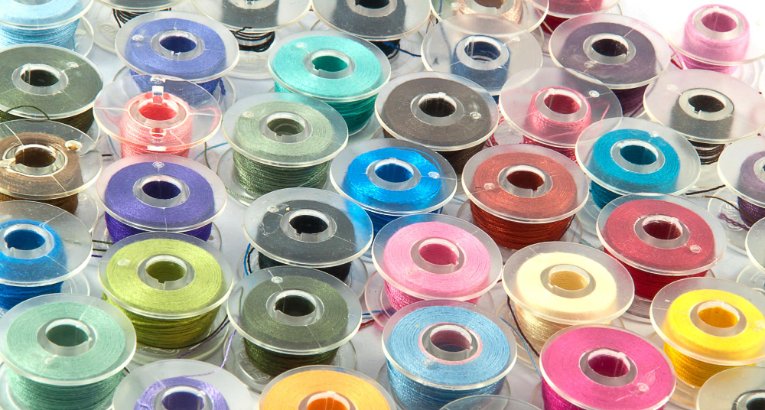
Not all thread brands perform the same. Here’s what you need to know about the top brands:
Gutermann
Best for: General sewing
Quality: Very high
Price: Premium
German-made quality with excellent color selection. Works well in all machines.
Coats & Clark
Best for: Everyday projects
Quality: Good to very good
Price: Budget to mid-range
Reliable choice available everywhere. Their Dual Duty XP is particularly good.
Aurifil
Best for: Quilting
Quality: Excellent
Price: Premium
Quilter’s favorite for piecing and quilting. Very low lint production.
Superior Threads
Best for: Specialty work
Quality: Excellent
Price: Premium
Great selection of specialty threads. Excellent customer education.
Mettler
Best for: Professional work
Quality: Very high
Price: Mid to premium
Swiss quality with good strength. Popular with professionals.
Madeira
Best for: Embroidery
Quality: Excellent
Price: Premium
Outstanding embroidery threads with brilliant colors and shine.
What Does Singer Recommend?
Singer sewing machines work well with most quality thread brands. They specifically mention compatibility with Gutermann, Coats & Clark, and Mettler in their manuals. The key is using good quality thread rather than a specific brand.
Is Coats and Clark Thread Good?
Yes, Coats & Clark makes reliable thread that works well for most home sewing projects. Their Dual Duty XP line offers good strength and color selection at a reasonable price. While it may not be as refined as premium brands, it’s a solid choice for everyday sewing.
Troubleshooting Common Thread Problems
Even experienced sewists run into thread problems. Here’s how to solve the most common issues:
Why Is My Thread Breaking?
Thread breakage usually has a simple fix. Work through these steps:
- Check your needle: A dull, bent, or wrong-sized needle causes most breaks. Replace with the right size for your thread and fabric.
- Re-thread your machine: Start over with the presser foot UP so the tension discs open properly.
- Check thread quality: Old or poor-quality thread breaks more often. Try a different spool.
- Adjust tension: Too-tight tension stresses the thread. Start loose and gradually tighten.
- Slow down: High speeds can overheat synthetic threads and cause breaks.
Why Is My Thread Not Going Through the Fabric?
If thread won’t penetrate your fabric, try these solutions:
- Use a sharper needle – ballpoint needles work for knits, sharp needles for wovens
- Check if your fabric is too thick for your thread and needle combination
- Make sure your machine can handle the fabric thickness
- Consider using a leather needle for very thick materials
Fixing Tension Problems
Tension issues show up as loose loops on top or bottom of your fabric. Here’s the fix:
Does Thicker Fabric Need More or Less Tension?
Thicker fabrics usually need slightly less tension because the thread has more work to do pulling through multiple layers. Start with your normal setting and adjust down if needed.
Common Machine Problems
Do All Sewing Machines Thread the Same Way?
No, threading paths vary between brands and models. However, the general principle stays the same: thread goes from spool to tension discs to take-up lever to needle. Always follow your specific machine’s manual for best results.
If you’re having recurring problems, check out our comprehensive sewing machine troubleshooting guide for more solutions.
Sustainable and Eco-Friendly Threads
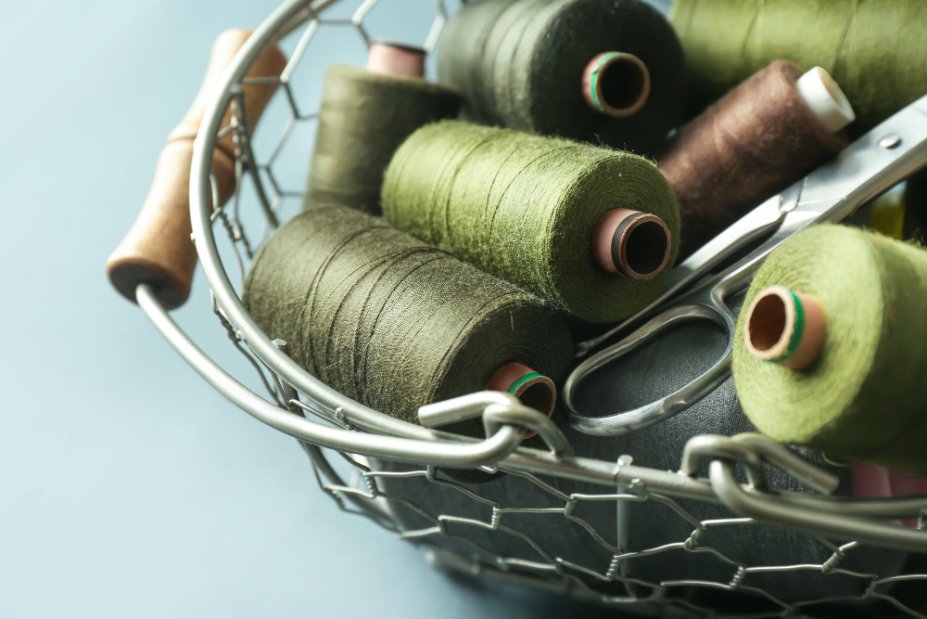
More sewists are choosing eco-friendly threads as sustainability becomes important in sewing. Here are your best options:
Recycled Polyester Threads
Many brands now offer threads made from recycled plastic bottles. These threads perform just like regular polyester but help reduce waste:
- Gutermann rPET: Made from 100% recycled polyester bottles
- Coats EcoVerde: Recycled polyester with OEKO-TEX certification
- A&E ECO100 line: Various recycled options for different needs
Organic Cotton Threads
Organic cotton threads avoid harmful pesticides and chemicals used in conventional cotton farming. While more expensive, they’re better for the environment and sensitive skin.
Biodegradable Options
For temporary basting or projects that need to break down naturally, look for:
- 100% cotton threads (no polyester core)
- Linen threads
- Water-soluble threads for specific applications
Thread Storage and Organization
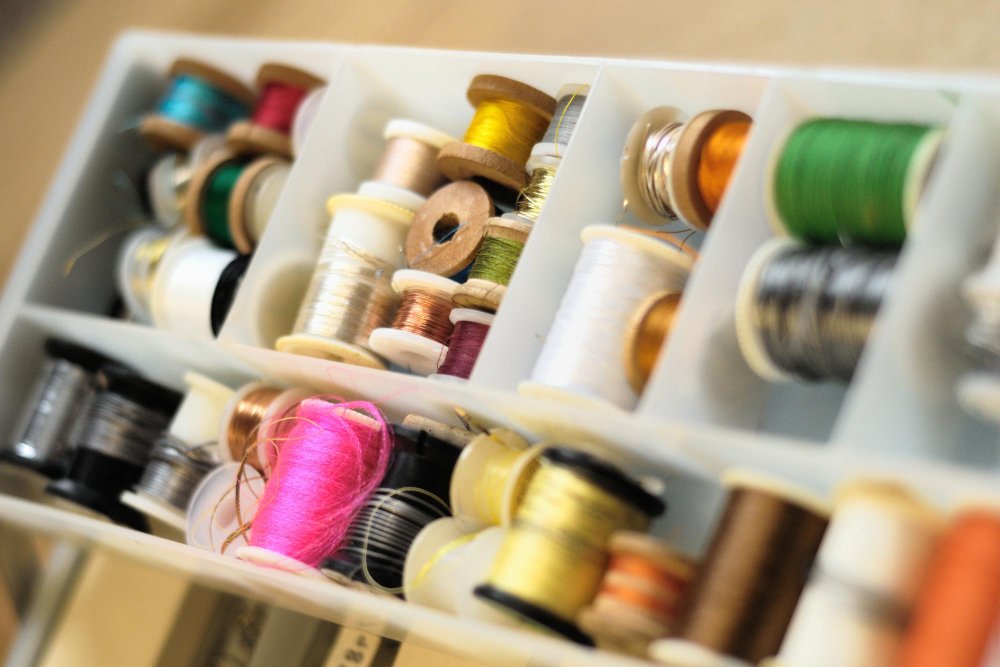
Good storage keeps your thread in perfect condition and helps you find what you need quickly. Here are proven methods:
Wall Racks
Best for: Frequently used threads
Pros: Easy to see and grab
Cons: Dust and UV exposure
Mount near your sewing machine for quick access to everyday threads.
Drawer Storage
Best for: Large collections
Pros: Protected from dust and light
Cons: Takes up drawer space
Use thread trays to keep spools organized and prevent tangling.
Plastic Boxes
Best for: Project-specific storage
Pros: Portable, stackable
Cons: Can be bulky
Clear boxes let you see contents while protecting from dust.
Mason Jars
Best for: Color-coordinated storage
Pros: Attractive, airtight
Cons: Limited capacity
Great for displaying beautiful threads while keeping them clean.
Storage Tips for Thread Longevity
- Keep threads away from direct sunlight – UV light fades and weakens fibers
- Store in moderate humidity – Too dry makes thread brittle, too humid causes mold
- Use thread nets or caps to prevent unwinding and tangling
- Store vertically when possible – easier to read labels and access
- Group by color families or project types for quick selection
Smart Shopping for Thread
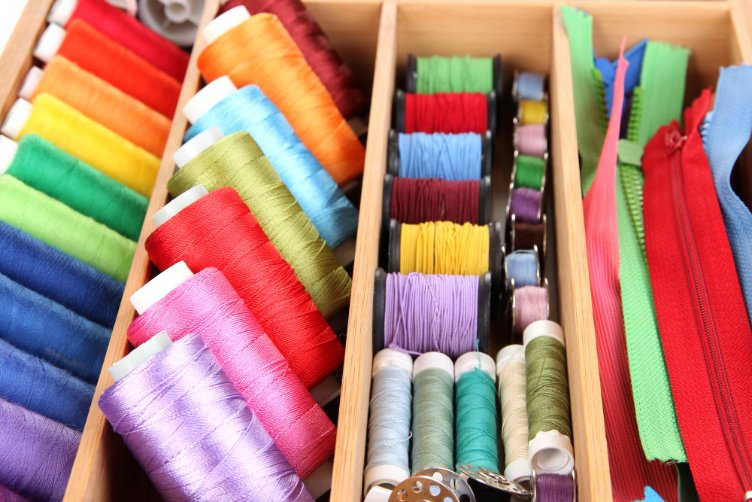
Where to Buy Quality Thread
You can find good thread in several places:
- Local sewing shops: Best for color matching and expert advice
- Online retailers: Wider selection and bulk buying options
- Chain craft stores: Convenient but check quality carefully
- Quilting shows: Great for discovering new brands and bulk deals
Bulk Buying vs. Individual Spools
Buy in bulk when you:
- Use lots of basic colors (black, white, navy)
- Do production sewing or quilting
- Find a great deal on quality thread
Buy individual spools when you:
- Need specific colors for one project
- Want to try a new brand
- Have limited storage space
Avoiding Counterfeit Threads
Fake threads from popular brands are becoming common online. Here’s how to spot them:
- Prices much lower than normal retail
- Misspelled brand names or poor packaging
- Sellers with no return policy
- Thread that feels rough or looks uneven
Project-Specific Thread Recommendations
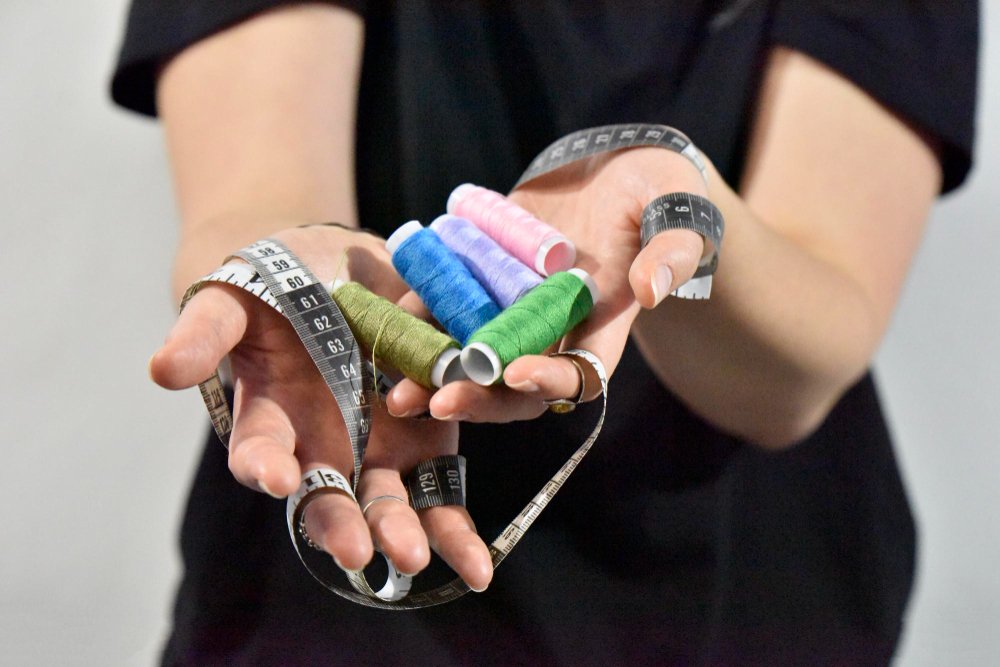
Can I Use Quilting Thread for Regular Sewing?
Yes, you can use quilting thread for regular sewing, but it might be overkill. Quilting thread is usually higher quality and more expensive than needed for basic construction. However, it’s perfect for items that need extra strength like bags or children’s clothes.
When to Use Silk Thread
Silk thread works beautifully for:
- Hand-sewing buttonholes on fine garments
- Basting (it removes easily without leaving marks)
- Sewing silk fabrics (similar care requirements)
- Hand-quilting where you want minimal bulk
- Heirloom sewing and smocking
Best Threads for Different Projects
| Project Type | Recommended Thread | Weight | Why |
|---|---|---|---|
| Basic garment construction | Polyester all-purpose | 50 weight | Strong, versatile, good stretch |
| Quilting (piecing) | Cotton or cotton-wrapped poly | 50 weight | Less stretch, heat resistant |
| Denim hemming | Heavy-duty polyester | 30 weight | Strength for thick seams |
| Delicate fabrics | Fine polyester or silk | 60-80 weight | Won’t damage fine fibers |
| Outdoor gear | Nylon or heavy polyester | 30-40 weight | Weather resistant, very strong |
| Embroidery | Rayon or polyester embroidery | 40 weight | Sheen and color variety |
Special Considerations for Lace
When working with lace fabric, choose fine threads that won’t overpower the delicate design. For Chantilly lace or Venise lace, use 60-weight thread in a color that matches the lace base.
Frequently Asked Questions
Conclusion
Essential Recommendations
For Beginners: Start with quality polyester all-purpose thread in basic colors (black, white, navy, beige). This handles 80% of your projects while you learn.
For Experienced Sewists: Build a collection that includes cotton threads for natural fabrics, heavy-duty threads for thick materials, and specialty threads for decorative work.
Top 5 Thread Selection Rules
- Match fiber families when possible – cotton thread with cotton fabric, polyester with synthetics
- Choose thread one shade darker – it looks lighter when stitched
- Lower weight numbers mean thicker thread – 30 is thick, 60 is thin
- Quality matters more than brand – good thread prevents headaches
- Test first, commit second – always try new combinations on scraps
Investment Priorities
Spend your money on quality thread for:
- Projects you’ll keep for years
- Items that get heavy wear
- Gifts and special occasions
- Learning new techniques (good thread makes it easier)
Troubleshooting Success
Remember the most common fixes:
- Thread breaks = check needle first, then re-thread
- Poor stitch quality = usually tension or thread quality
- Color doesn’t match = test in natural light before buying
Sustainable Sewing
Make eco-friendly choices by:
- Buying quality thread that lasts longer
- Choosing recycled polyester options when available
- Supporting brands with sustainable practices
- Storing thread properly to extend its life
Thread selection might seem complex at first, but these guidelines will serve you well on every project. Start with the basics, experiment as you grow, and don’t be afraid to try new options. Your sewing skills will improve along with your thread knowledge.
Remember that even professional sewists sometimes struggle with thread choices. The key is understanding the principles and applying them to your specific project needs. When you take time to choose the right thread, you’ll see the difference in your finished results.
Whether you’re just learning to thread a needle or you’re ready to tackle complex projects with different fabric types, the right thread makes all the difference. Invest in quality, store it properly, and enjoy the satisfaction of beautiful, lasting results.

